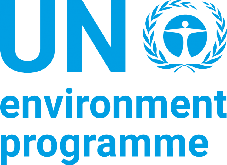The exponential growth in material consumption over recent decades confirms: People love to acquire things. Even amid strict pandemic lockdowns, many consumers were undeterred and simply conducted more of their transactions online. But the pleasure is often short-lived, with items used briefly and discarded quickly.
Ultimately, humans generate more than two billion tonnes of trash, every year.
It’s easy to forget about things once they are thrown “away” – as though they cease to exist, once out of sight. But things don’t just disappear. Their environmental impact lingers and this has given rise to another set of challenges.
Human-generated methane emission
Dumpsites produce methane as organic waste decomposes – particularly in the absence of oxygen. They are the third-largest source of human-generated methane – a greenhouse gas that is 28 times more potent than carbon dioxide and a major accelerator of climate change.
Landfills are no better. “Because they are deeper and designed to store more waste, oxygen is even less present and conditions are ideal for anaerobic decomposition,” explains Sandra Mazo-Nix, Waste Initiative Coordinator at the UN Environment Programme-hosted Climate and Clean Air Coalition.
The toll on human health
The World Bank estimates that one-third of the waste generated is not safely managed. Where waste collection and disposal services are lacking, waste may be dumped in open, unmanaged areas where it is usually burned. Open waste-burning causes the release of black carbon – a key component of fine particulate matter (PM2.5) that penetrates deep into the lungs and bloodstreams, with adverse health impacts.
According to the World Health Organization, about 7 million people die every year from exposure to fine particles and the diseases and respiratory infections they cause. And conditions such as asthma and chronic lung disease may also increase vulnerability to COVID-19. By 2050, as the global population nears 10 billion, waste is projected to reach a staggering 3.4 billion tonnes every year.
Socio-economic issue
“It’s not just a sanitation problem,” says Mazo-Nix. “Waste is a symptom of inter-affective issues relating to human behaviour, access to resources, competing priorities, political will and social justice – among other things.”
High-income countries contribute about 34 per cent of the waste produced, worldwide – even though they represent only 16 per cent of the population. But as incomes increase, so does waste production and contributions are expected to change in the years to come. By 2050, waste generation in low- and middle-income countries is anticipated to increase by 40 per cent and in high-income countries by 19 per cent.
Demands in one part of the world are supplied by resources and labour in another, so trade effectively redistributes the environmental burden – disassociating consumption habits from the local impact. Developed countries at times also divert waste to less developed countries – a practice that is being monitored and curtailed by the Bamako Convention and Basel Convention.
Holistic action needed
Mazo-Nix is adamant that, “waste needs to be seen holistically.” And while the world moves toward a circular economy – with sustainable products and new ways of living – the transition is possible.
Collaborating with cities around the world, the Climate and Clean Air Coalition works to capture and use landfill gas; prevent open burning of waste and divert organic waste from dumpsites, altogether.
By capturing the gas produced by landfills, methane can be prevented from entering the atmosphere and converted for use as a renewable energy source. In addition to mitigating climate change and reducing health risks, this is also a source of employment and local revenue.
For more information about waste and its impact on air quality, contact Tiy Chung: [email protected].
Every year, on 7 September, the world celebrates the International Day of Clean Air for Blue Skies. The day aims to raise awareness and facilitate actions to improve air quality. It is a global call to find new ways of doing things, to reduce the amount of air pollution we cause, and ensure that everyone, everywhere can enjoy their right to breathe clean air. The theme of the second annual International Day of Clear Air for blue skies, facilitated by the United Nations Environment Programme (UNEP), is “Healthy Air, Healthy Planet.”
Further resources
